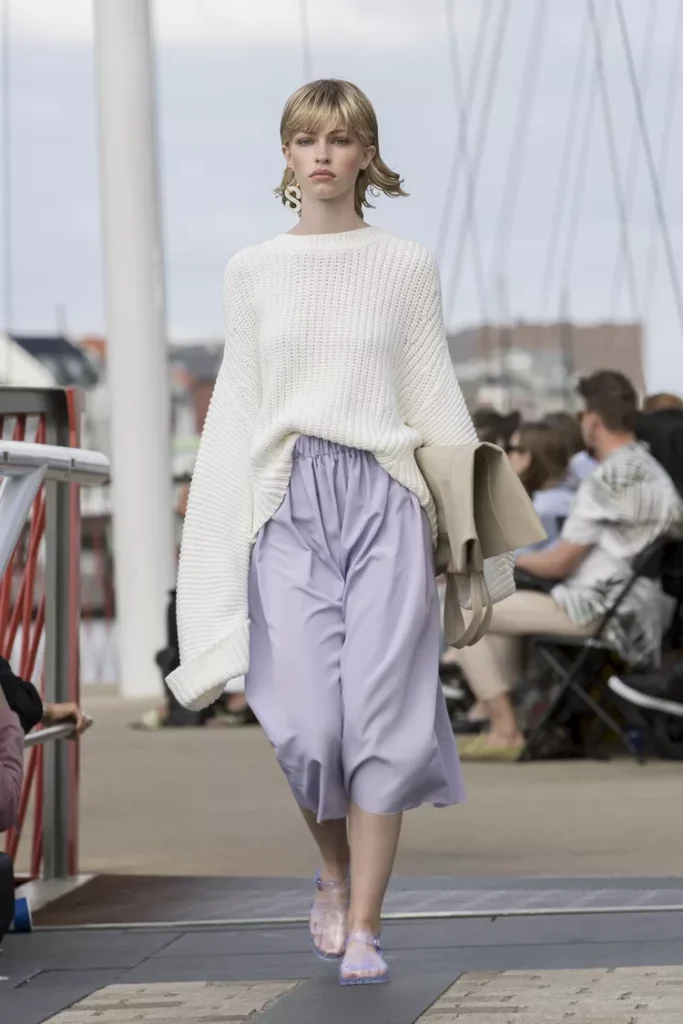Archives
Categories
- Agencies (2)
- Auditions (2)
- Beauty Tips (3)
- Fashion clothes (29)
- Fashion designs (26)
- Fashion show Events (305)
- Fashion Tips (29)
- Fashion Trends (55)
- Models (43)
- Fashion News. (25)
- Photography (2)
Summer trend style 2024 for Women
The 2024 summer collection for women embraces both femininity and practicality. With a focus on bold patterns, asymmetry, vibrant colors, and airy silhouettes, this season’s offerings are designed to complement the lively spirit of summer. From flowing dresses to linen co-ords and comfortable jumpsuits, the collection caters to diverse tastes and occasions.
Crafted from lightweight fabrics like cotton and linen, the pieces ensure not just style but also comfort in warm weather. Whether one favors boho chic, minimalism, or lively prints, the collection offers trendy options such as crop tops, maxi dresses, and chic accessories to capture the essence of summer.
Crop Tops and Bralettes for Effortless Summer Style:
No longer reserved for the beach, crop tops and bralettes now pair seamlessly with high-waisted pants, skirts, and more, adding a touch of trendy flair to any ensemble, whether casual or formal.
Wide-Legged Trousers for Summer Sophistication:
High-waisted, wide-legged trousers are a must-have for women seeking both style and comfort this summer. Offering a breezy feel and chic look, these breathable pants come in an array of prints and solids, elevating any summer outfit effortlessly.
Tropical Prints for a Refreshing Summer Vibe:
Embrace the allure of palm leaves, exotic blooms, and tropical motifs to infuse your summer wardrobe with a feminine, cooling touch. While paisley prints once dominated, today’s trends celebrate a variety of prints and colors, ensuring a stylish and comfortable summer look.
Posted in Fashion clothes | No Comments »
Dresses and Skirts Summer Fashion Trends For 2024
In 2024, women’s fashion will be dominated by a plethora of dresses and skirts, offering an array of styles tailored to suit every occasion and individual taste.
Bold and vivacious, mini dresses adorned with striking prints and vibrant hues command attention, serving as expressive statements of personal style. Meanwhile, midi and maxi lengths exude an air of refinement and sophistication, offering elegant options for more formal affairs.
Flowy skirts crafted from airy fabrics such as chiffon, rayon, and silk epitomize summertime chic, providing effortless comfort and style in warm weather. On the other hand, denim skirts offer a versatile and casually chic alternative for everyday wear, blending laid-back charm with fashionable flair.
Innovative design flourishes such as asymmetrical hemlines and playful ruffled accents infuse garments with a touch of whimsy and individuality. Conversely, sleek and minimalist silhouettes embrace a contemporary aesthetic, exuding understated elegance and modern allure.
Whether elevated for a special occasion or dressed down for everyday wear, dresses and skirts remain timeless essentials in every woman’s wardrobe, embodying versatility, femininity, and enduring style.
Posted in Fashion clothes | No Comments »
The Jellyfish Trend: A Resurgence of ‘90s Fashion in 2024
As we progress deeper into 2024, the enduring influence of ‘90s fashion remains palpable, with a pronounced revival of jelly accessories capturing attention. According to Stanback, the trend forecaster, the year is marked by an all-encompassing inspiration drawn from our beloved invertebrate, the jellyfish. This quirky aesthetic is predominantly championed by the Gen Z and Millennial demographics, who eagerly integrate it into their personal style, actively seeking out unique expressions like ‘jellyfish hats’ and ‘jellyfish haircuts’. Furthermore, the resurgence extends to the realm of footwear, with jelly shoes reclaiming their position in the fashion spotlight.

The resurgence of ‘90s fashion in 2024 signifies more than just a nostalgic throwback; it reflects a cultural phenomenon deeply intertwined with generational identity and contemporary tastes. The jelly aesthetic, characterized by its whimsical and translucent allure, embodies a sense of playfulness and individuality that resonates with younger consumers seeking unconventional forms of self-expression.
Stanback’s observation underscores the pervasiveness of this trend, suggesting that the influence of jellyfish-inspired motifs transcends mere fashion choices to permeate various facets of everyday life. From fashion accessories to interior decor, the squishy aesthetic finds its way into diverse realms, signaling a broader cultural shift towards embracing unconventional and eclectic influences.
Central to this phenomenon is the active engagement of Gen Z and Millennials, who wield significant influence in shaping consumer preferences and driving trends. Their penchant for nostalgia, coupled with a desire for novelty, fuels the resurgence of ‘90s-inspired fashion elements like jelly accessories. Through social media platforms and online communities, they amplify and propagate these trends, fostering a sense of collective participation and cultural belonging.
The popularity of jelly accessories also speaks to broader socio-cultural themes, reflecting a growing appreciation for sustainability and eco-consciousness among consumers. Jelly materials, often associated with their translucent and water-resistant properties, offer a sustainable alternative to traditional fashion materials, contributing to a shift towards more environmentally friendly fashion choices. Moreover, the durability and versatility of jelly accessories align with the principles of circular fashion, promoting longevity and reuse in a disposable consumer culture.
In addition to jelly accessories, the resurgence of jelly shoes further solidifies the ‘90s revival in contemporary fashion. These iconic footwear staples, characterized by their nostalgic charm and vibrant colors, evoke fond memories of childhood for many, tapping into a collective sense of nostalgia and sentimentality. The popularity of jelly shoes extends beyond mere fashion trends; it embodies a cultural zeitgeist, encapsulating the spirit of a generation and reflecting its evolving tastes and sensibilities.
As we navigate the complexities of modern life, the resurgence of ‘90s fashion, particularly the jelly aesthetic, offers a playful and whimsical escape from the mundane. It invites us to embrace our individuality, celebrate our quirks, and find beauty in the unconventional. In doing so, it reaffirms the enduring power of fashion as a form of self-expression and cultural commentary, bridging the past with the present and charting a course towards a more vibrant and inclusive future.
Posted in Fashion show Events, Fashion Trends | No Comments »


